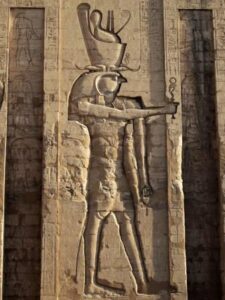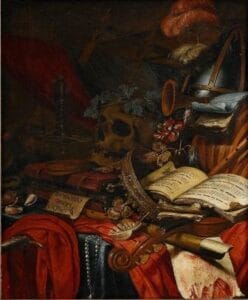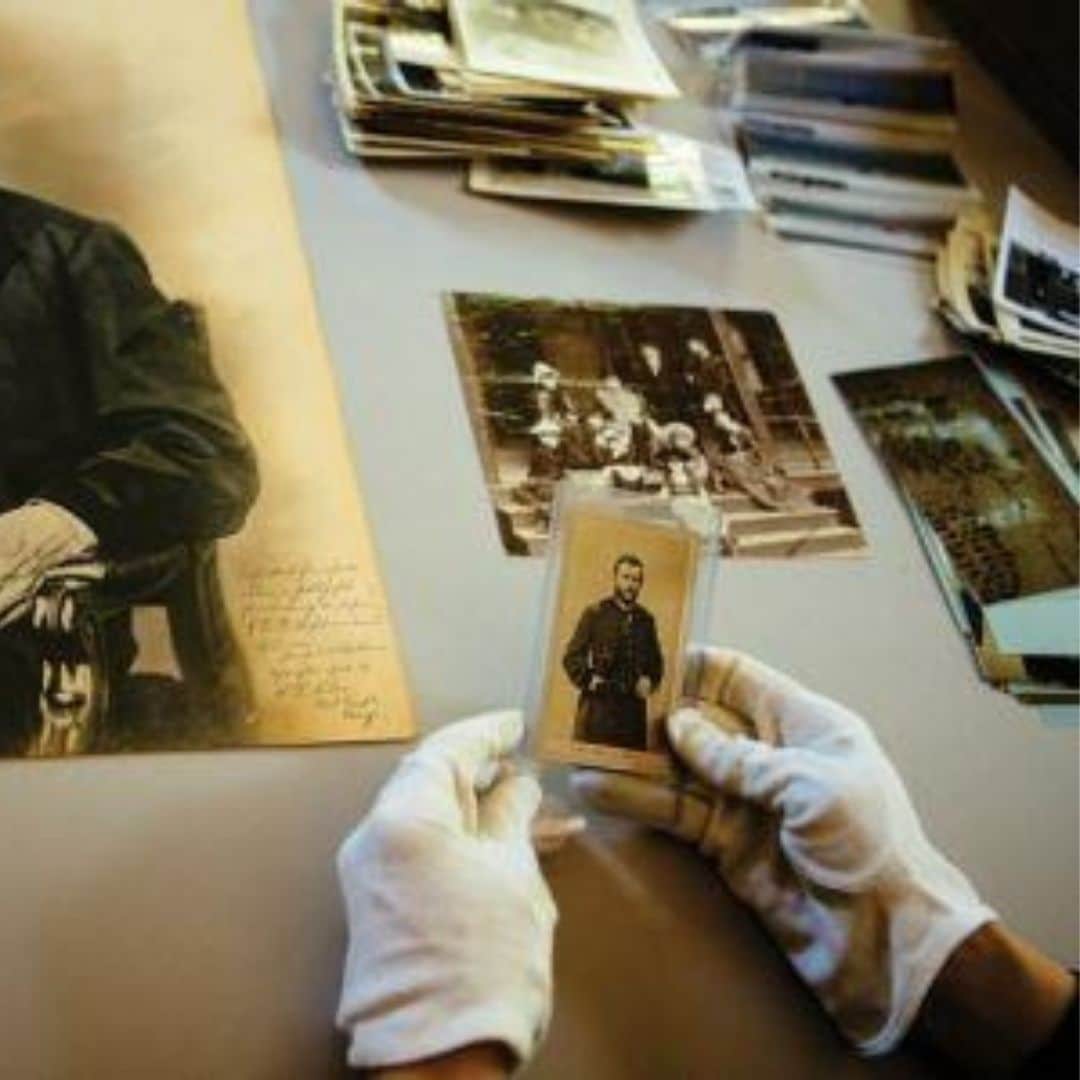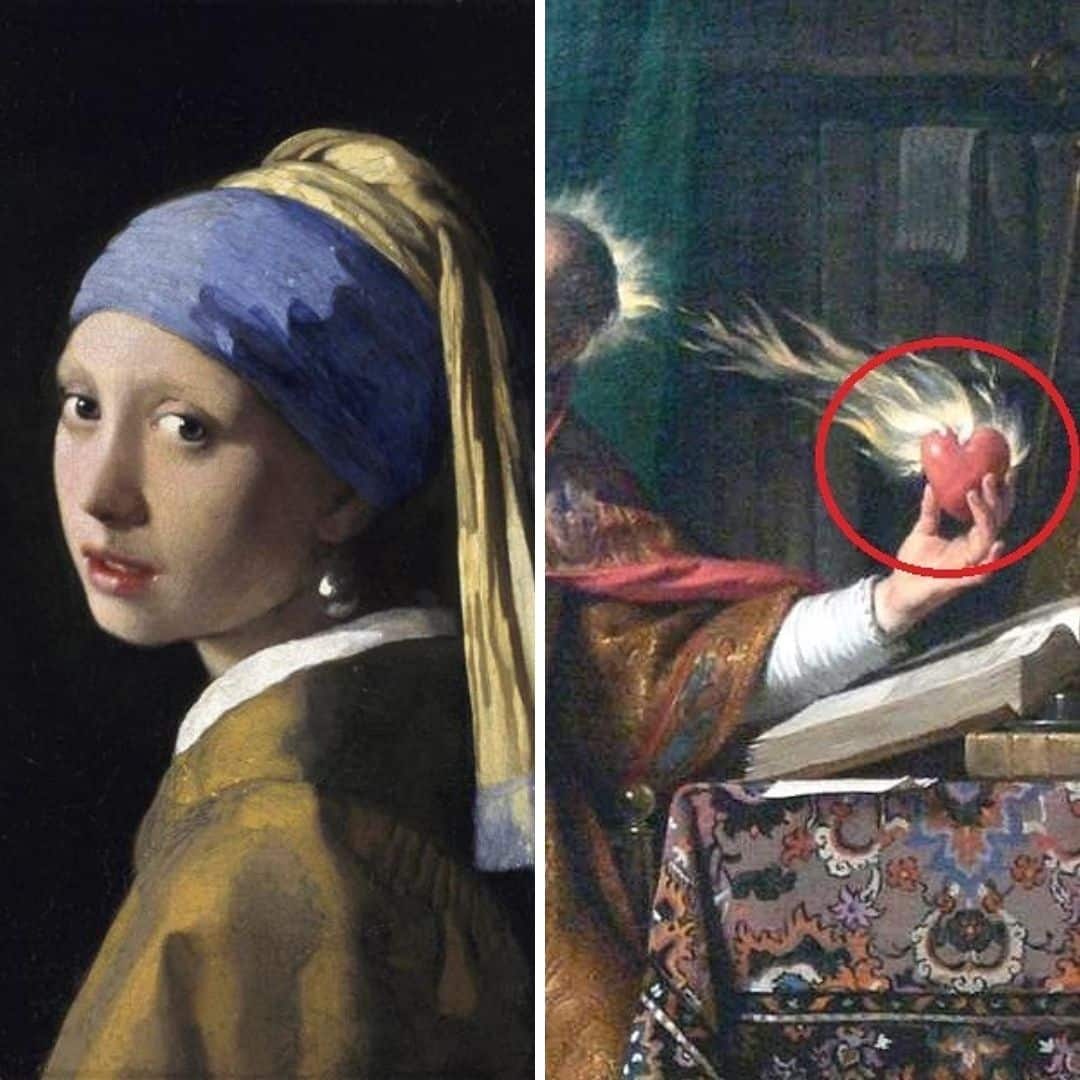Let’s see some examples in art history.

The use of icons in art dates back to 3000 BC to the Neolithic civilizations of the Middle East that used animalist figures to represent their gods.
We can see, for example, the Egyptian goddess Hathor, represented in reliefs and murals as a woman with a cow’s head.
Likewise, the Sun-god Ra is represented with the head of a Hawk and Ptah, the god of creation, with the head of a bull.
in classical civilisations
For their part, the classical civilisations associated their gods to specific objects.
In ancient Greece, for example, we can identify, Zeus accompanied by an eagle or holding beams of lightning,
Apollo holding a lyre and Diana, the huntress, carrying a bow and quiver (or arrows).
christian iconography
 Also, during the period of the Roman Empire, the emergence of the symbols of Christianity, as the fish or the dove, that identified respectively Christ and the Holy Spirit, allowed the crypto-Christians to identify themselves in a less conspicuous way, helping them escape martyrdom.
Also, during the period of the Roman Empire, the emergence of the symbols of Christianity, as the fish or the dove, that identified respectively Christ and the Holy Spirit, allowed the crypto-Christians to identify themselves in a less conspicuous way, helping them escape martyrdom.
However, in later Christian art, there is an expansion of the amount and variety of iconographic representations.
And so we see emerge most of the attributes of Saints and Martyrs, becoming themselves now associated with specific objects (which would serve to identify them).
Get to know more about the first christian symbols in the post.
from the Renaissance
Allegorical painting became more popular during the Renaissance period and throughout the 18th century.
The artists imagined complex compositions full of symbolism, representing, for instance, the theme of human vanity, very popular during the Baroque era.
Jewellery, coins or musical instruments would be associated to worldly pleasures, while skulls, unlit candles or hourglasses would remember the viewer that death is imminent (Memento Mori).

These are just a few examples we can find in art history.
iconography definition in art
 Iconography as an area of study emerges with the studies of art historian Aby Warburg (1866-1929), still in the 19th century.
Iconography as an area of study emerges with the studies of art historian Aby Warburg (1866-1929), still in the 19th century.
He advocated that the story of the images is what teaches us their general function, thus being a mechanism of expression of the needs and expectations and a form of religious and political communication.
Expanding the idea of the importance of the study of the works of art in all their details, he founded the Warburg Institute, in Hamburg (Germany).
The iconography definition in art is born.
However the this definition truly becomes a study area with Erwin Panofsky (1892-1968).
Having been a student of Warburg in the University of Hamburg, Panofsky developed his own studies, having in mind the definition of Iconology .
In 1939, in his essay Studies in Iconology, Panofsky, as Warburg did before, spoke of reading the elements of a work of art beyond the simple formal description of said piece.
In other words, he suggested that, before a work of art, we should not simply ask «what?», but also «why?».
His analysis of the Marriage of the Arnolfini, by Jan Van Eyck, study dated of 1935, will be the first study to deal with the subject of symbolism within works of art.
Although his interpretation of this painting is nowadays considered incorrect by some art historians, it was a milestone in the analysis of art.


 reflected in Mankind’s daily life.
reflected in Mankind’s daily life.







1 Comment.
I rattling pleased to find this internet site on bing, just what I was looking for : D also bookmarked.